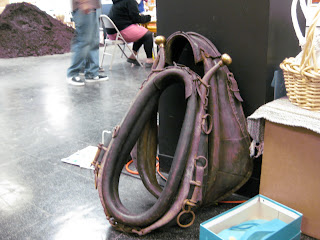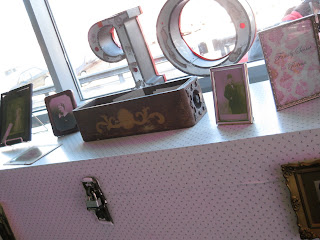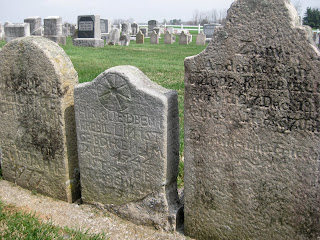 Milwaukee's Got Books Too!!
Milwaukee's Got Books Too!!Sometimes I am amazed when people say that they prefer the "big cities" like New York, Chicago, Philadelphia, because they have better access to "books and culture." Okay, this is a complicated statement, because "culture" (whatever that is or we make it out to be) is a hard word to define. Sure, in New York City for example, one could see maybe 4 times as many operas and probably 30 times as many classical concerts as in Chicago, and probably ten or a hundred fold that in much smaller American cities. But books? Aren't books pretty much everywhere? I have really heard people make such comments. So when it comes to books, I'm slightly puzzled, because many of America's smaller cities don't simply have "lots of books," but many of the best book stores--most of them used book shops, which believe it or not, I prefer to the larger monstrosities of the famed American metropolis--we won't mention names here!

The beauty of small (or smaller) American cities, especially those which have colleges or universities, is that they most often have great used book shops. And plenty of them for you to browse and buy or simply sit back in and enjoy a cup of tea, while you read. I remember fondly the bookshops in Champaign-Urbana, when I was in library school. Just delightful places, and all out in the rural flatness of middle Illinois.

So when I went to Milwaukee last spring for our semi-annual Chicago Area Theological Library Association (CATLA) meeting, I was more than pleased with the various and bountiful resources available to see...and surely more important: available to Milwaukeeans (or is it Milwauker?)


I drove up from Chicago with the director of the CTU library, Melody McMahon, and we all gathered at the University of Wisconsin-Milwaukee campus at around 9AM. The library above is the Golda Meir Library, named after its perhaps most famous resident, who lived here nearly a century ago, before heading off to the middle east and becoming the first woman head of the state of Israel. In the lobby of this library were many items, including art made out of old books: these were made into an alligator and a machine gun!

We held our sessions next to the Special Collections of the library. Below, in the hallway leading up to the Special Collections was a display of historical comics on display. This library apparently has a magnificent collection of comics.


We took a tour of the library facilities, and many of us who came from smaller libraries (or at least economically challenged ones!) were marveling at the technologies of the university campus: below is a digital sign, which displayed how many computer stations were being used, where, and how long! So if you needed a computer, you could look at this screen and find where there was an available seat in the library!


Golda, above. Below: Deirdre A. Dempsey, Ph.D. gave an outstanding performace at her lecture on the history and background of the Dead Sea Scrolls. Professor Dempsey is Associate Professor in the Theology Department at Marquette University, and her webpage can be seen here: http://www.marquette.edu/theology/dempsey.shtml
She gave a marvelous presentation as a preface to the tour we would be taking later this afternoon at the Milwaukee Public Museum, downtown.


At the museum above and below. An interesting place, which I didn't have enough time to visit all of. But it was interesting, nonetheless. You'll see that we weren't allowed--of course--to photograph the original scrolls, so I took pictures of the signs and books about them!


It was a funny and odd experience. Above is just at the top of the escalator, near the entrance of the exhibit. Once you entered the area where the scroll fragments were on exhibit, it got dark, with blue lights...and the hallways were decorated with middle eastern motifs and palm trees! There was a soundtrack of eerie middle eastern music playing, some sort of Bedouin instrument, a horn, calling into the night. Then sounds of wind and the dessert. There were maps of the ancient world and light-generated images being projected here and there. The rooms where the scrolls were held were quite cool. It was though, I must admit, a rather surreal experience. Like they were forcing you to have a particular--almost religious or spiritual--experience.

Emerging in the later afternoon, we came into the light and into the book store. You could buy books about the scrolls, if you so desired.


On the way home, I took a few snapshots of old book shops and other curiosities in Milwaukee.
They do have books, you know!

With an astounding array of culture--from local used book shops, a university library system at UW-Milwaukee boasting more than 3.2 million volumes, public libraries, a museum showing an exhibit on the Dead Sea Scrolls, and more--I think that many people could say that Milwaukee might be able to hold its own culturally. And you know, I didn't even mention the great restaurants downtown, the Calatrava-designed Milwaukee Art Museum (one of my favorite all time buildings in the world!!), the gorgeous lake-front, or even...how could we forget: the Burning Snow Center (below) for the Experimental Arts. Hey!--I think everyone needs a little bit of Burning Snow now and then. Our whole enterprise in life and books is experimental arts. So keep on reading; and keep on experimenting!




































